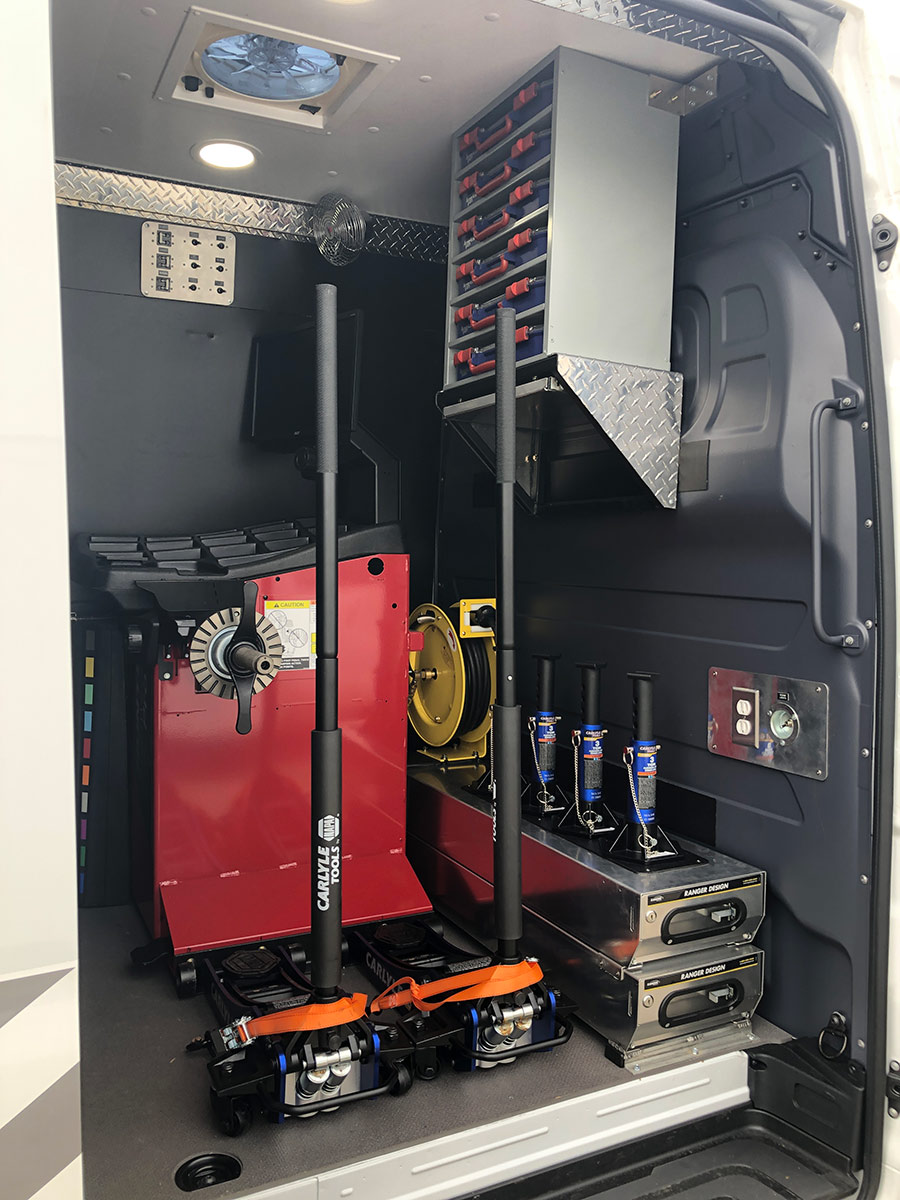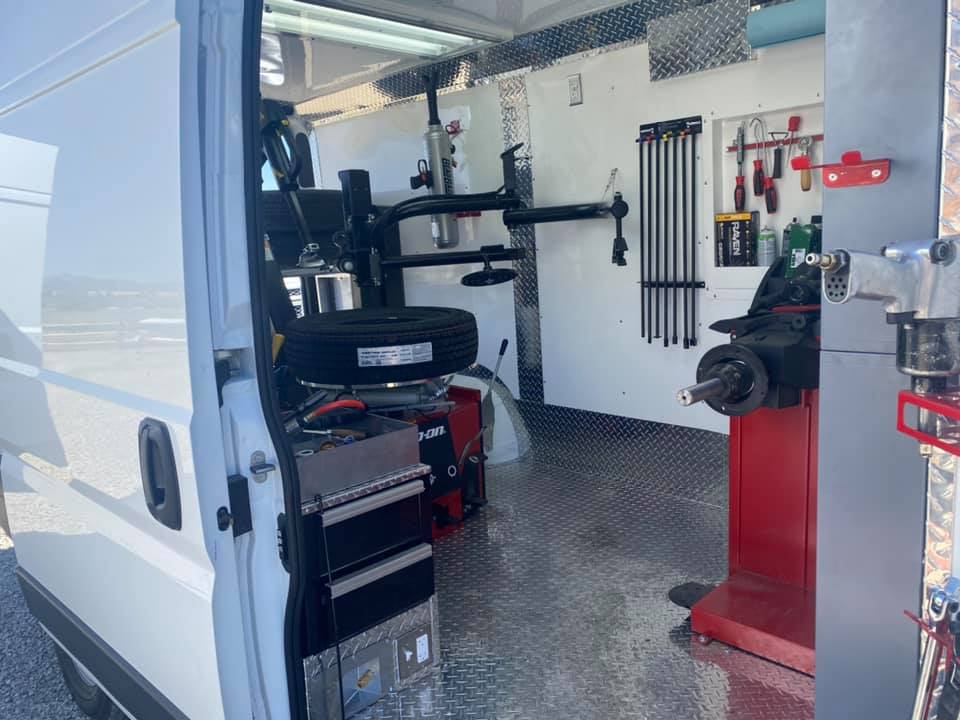Reputable Mobile Tire Change and Replacement in Las Vegas
Reputable Mobile Tire Change and Replacement in Las Vegas
Blog Article
Tire Solution: Proven Methods for Optimum Tire Maintenance and Treatment
From making certain proper tire pressure to normal turning and alignment, there are proven approaches that can substantially prolong the life-span of your tires and boost overall driving experience. Let's dig right into the world of tire service and find the tricks to maintaining your tires in top-notch shape for the long haul - Mobile Tire Service Las Vegas.
Value of Tire Stress
Correct tire stress is an essential consider making certain optimum vehicle performance and safety on the road. Maintaining the recommended tire pressure levels offered by the producer provides various benefits. First of all, sufficient tire pressure promotes better fuel efficiency, as under-inflated tires can lead to increased rolling resistance, causing the engine to function tougher and eat even more gas. Proper tire stress makes certain also step wear, boosting tire durability and saving money in the long run by delaying the requirement for premature replacements. In addition, effectively blew up tires add to improved handling and stopping abilities, important for safe driving in numerous roadway conditions. Over-inflated tires, on the various other hand, can result in decreased grip and a harsher experience. Alternatively, under-inflated tires are susceptible to overheating, which can result in blowouts and mishaps. Routinely inspecting and changing tire stress, especially soon journeys, is an easy yet reliable way to boost car efficiency, extend tire life expectancy, and prioritize security on the roadway.
Tire Rotation Standards
When thinking about tire turning guidelines, it is vital to understand the significance of this upkeep task in taking full advantage of tire lifespan and maintaining ideal automobile performance. Tire rotation entails altering the placement of each tire on a lorry to make certain also walk wear. Front tires have a tendency to put on extra promptly than back tires as a result of guiding pressures, making normal turning vital for well balanced wear patterns. The suggested rotation pattern varies depending on whether a vehicle is front-wheel, rear-wheel, all-wheel, or 4x4. Typically, tires need to be revolved every 5,000 to 7,500 miles, or as encouraged in the automobile guidebook. Ignoring tire rotation can lead to irregular wear, influencing handling, traction, and potentially compromising vehicle safety. By sticking to correct turning standards, chauffeurs can extend the life of their tires, boost gas effectiveness, and enhance total driving experience. Routine rotation is a simple yet reliable upkeep method that contributes substantially to tire durability and car efficiency.

Advantages of Wheel Alignment
Making sure correct wheel placement after tire rotation is critical for preserving balanced wear patterns and optimizing automobile performance. In addition, appropriate wheel positioning assists to prolong the lifespan of your tires. Misaligned wheels can trigger unequal tire wear, leading to premature tire substitute and increased upkeep expenses.

Tire Tread Depth Examine
Doing a regular examination of tire walk deepness is crucial for preserving secure driving conditions and lengthening the lifespan of your tires. The tread on your tires plays an important duty in providing traction, specifically in slippery or damp problems. To examine your tire tread depth, you can utilize a tread depth gauge or the cent test. The suggested tread depth is at least 2/32 of an inch. It is time to change your tires to guarantee ideal performance and safety on the roadway if the tread deepness is listed below this limit. Uneven walk wear can indicate concerns with tire pressure, suspension, or positioning, highlighting the relevance of normal walk deepness checks. Neglecting to check and maintain correct step depth can result in minimized hold, longer braking ranges, and an enhanced risk of hydroplaning. By integrating tire tread depth checks right into your routine maintenance timetable, you can drive with confidence understanding that your tires remain in leading problem.
Seasonal Tire Assessment
An extensive evaluation of tire condition customized to specific weather is critical for maintaining optimum performance and security throughout the year. Seasonal tire inspection is an essential facet of tire maintenance that makes sure tires are ready to deal with the obstacles positioned by various climate condition. To prepare for winter season, it is necessary to check the tire stress frequently as cool temperatures can trigger tire pressure to drop. Checking tire tread deepness is additionally important to make sure adequate traction their website on snow and ice-covered roadways. Additionally, inspecting for indications of damage, such as lumps or splits, can help avoid prospective tire failings. As the periods adjustment, it is very important to analyze tire problem and make any kind of needed modifications to guarantee safe driving. By carrying out routine seasonal tire examinations, drivers can prolong tire lifespan, enhance fuel efficiency, and most importantly, guarantee a safe driving experience in varying weather - Mobile Tire Service Las Vegas.
Final Thought
In final thought, maintaining correct tire pressure, rotating tires consistently, lining up wheels properly, keeping an eye on walk deepness, and carrying out seasonal inspections are essential practices for ideal tire care. By adhering to these verified methods, vehicle drivers can ensure their tires last much longer, do much better, and add to total car security. It is essential to focus on tire upkeep to stop crashes, enhance gas effectiveness, and lengthen the life expectancy of tires.
Adequate tire stress advertises better gas effectiveness, as under-inflated tires can lead to enhanced rolling resistance, creating the engine to function more difficult and consume even more fuel.When considering tire turning standards, it is crucial to visite site recognize the importance of this maintenance job in taking full advantage of tire life-span and keeping see ideal vehicle performance. Seasonal tire examination is a fundamental element of tire upkeep that guarantees tires are all set to encounter the challenges presented by various weather problems. By carrying out routine seasonal tire assessments, drivers can lengthen tire life-span, improve gas performance, and most notably, ensure a protected driving experience in varying weather condition conditions.
In final thought, preserving appropriate tire pressure, turning tires on a regular basis, straightening wheels appropriately, monitoring tread deepness, and performing seasonal examinations are essential practices for optimum tire treatment.
Report this page